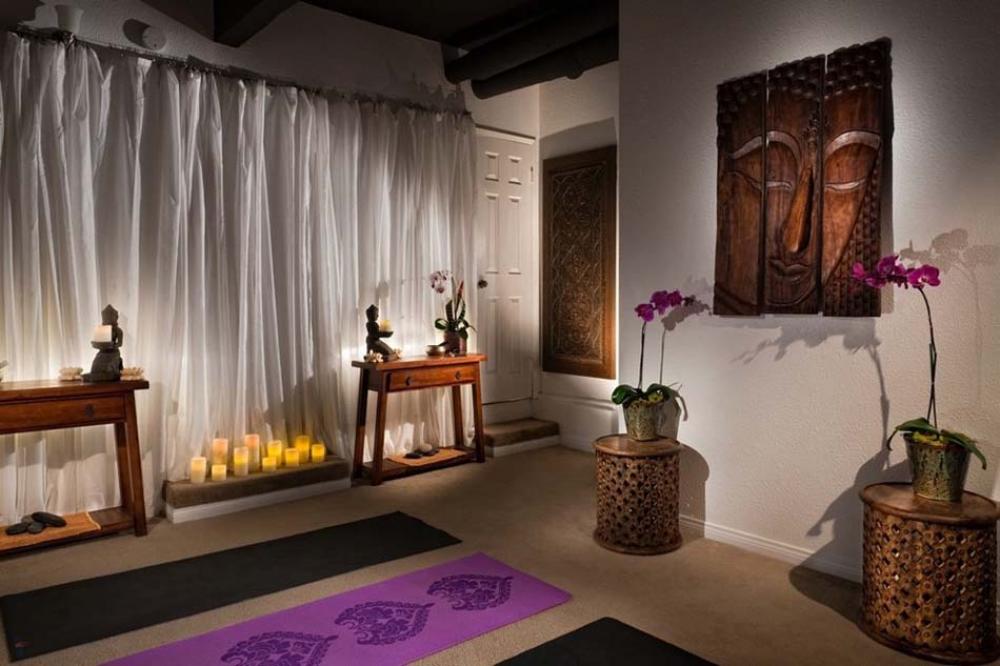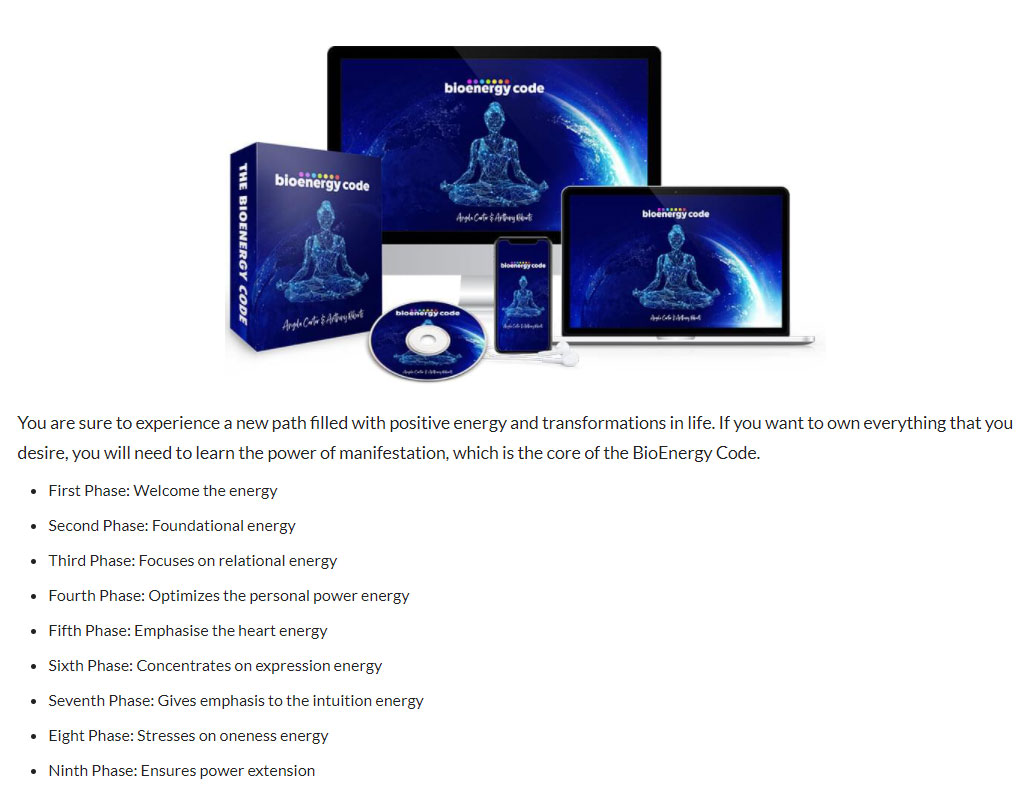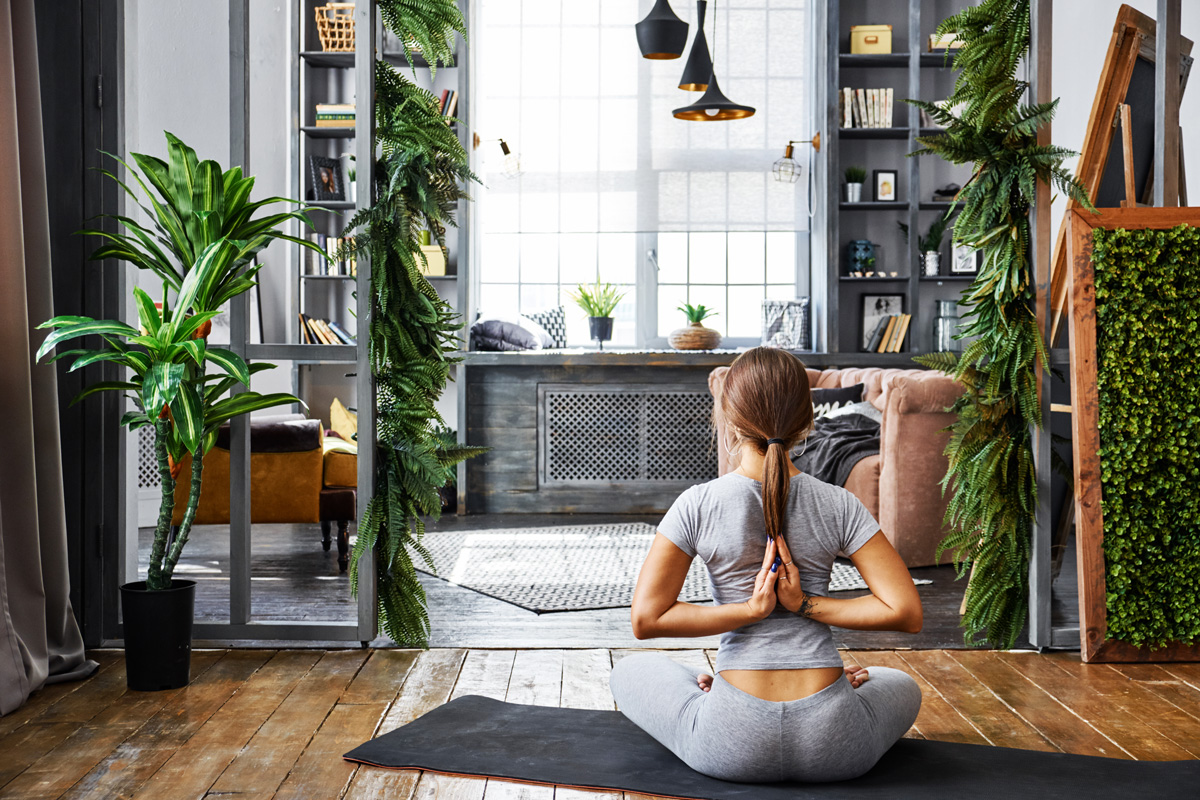Create meditation space
There are many merits attributed to meditation: learning to manage stress, to better live one's emotions or to develop one's creativity... Even companies are starting to offer meditation sessions to their employees. The practice is simple but it is nevertheless very demanding: how difficult it is to stay still when so many activities call for us! Yet, meditation gives an incomparable taste to life, provided it becomes a regular practice. And precisely, to become assiduous, nothing is better than a small corner dedicated to the house and some very simple rituals. Follow in the footsteps of a former meditation student who has become a regular practitioner...
1. The best meditation corner is the one where you feel good.
To practice at home, you don't need much: ideally a cushion (but a chair can do the trick) and a space where you feel comfortable. It can be a very small corner as well as a dedicated place in one of the main rooms of the house such as the living room. Let your feelings guide you.
2. Preserve your privacy
Although it is possible to meditate in a noisy environment (it may even be "exercise"), these conditions are not favorable. Meditation will be more resourcing if you experience it in a quiet environment. Depending on your family environment, it is therefore important to set up a corner protected from the comings and goings of those around you. This space can be very small, as long as it is isolated. Especially if you have children who are likely to interrupt you! In addition, small spaces can create a sense of security and help you concentrate. Remember that monks often meditate in very small cells in their moments of solitude. But this perception is very personal and some prefer to practice in an open space.
3. Make the space your own
The notion of intimacy depends, as we have just seen, on your family environment, but also on your own feelings. It is quite conceivable to create a small corner in the living room or in the bedroom. It is nevertheless important that you do not have to arrange this space every time you wish to meditate. The simple fact of having to move furniture to recreate your little corner will be a hindrance. And obstacles, you will encounter enough of them: not enough time, desire to do something else... The idea is to establish a ritual and to make you want to grant yourself this moment of intimacy with yourself.
All you have to do is provide a small seat, or a cushion, permanently placed in a corner of the room. If you create a coherent atmosphere around it, with a decorative touch with oriental connotations for example (Buddha statue, mini-gong...), or simply a candle, you make the space your own.
4. What foundation?
Usually, meditation is practiced on a cushion, sometimes called a zafu. It can be round, rectangular, or half-moon shaped. It makes it possible to adopt the traditional posture: sitting with legs in a suit, the back straight, arms relaxed. It is customary to place this cushion on a small mattress, like a futon. The latter allows to protect the feet, which quickly suffer from the direct support on a hard ground. These two accessories are not very bulky and can fit perfectly in even a small apartment. For meditation sitting on a chair, it is recommended to avoid leaning over, in order to remain in a vigilant posture. In this spirit, the good big soft chair is rather to be avoided: you risk dozing in it, which takes you away from the path of meditation itself!
5. Choose decorative accessories
We often have in mind the image of the austere meditation cushion, or one decorated with kitsch patterns, which we would quickly want to hide. However, there are also models covered with pretty fabrics. Your cushion then becomes a real decorative object, which you can perfectly integrate into your room, like any other ornament. You are free to choose the patterns and colors that seduce you to make it your own, because it is important that you like it, so that you want to find it as regularly as possible. In meditation, it is the assiduity which counts (as in any sporting activity!). Anything that helps to facilitate your perseverance is therefore positive. And it is not because meditation is a spiritual practice in the first place that it must necessarily be practiced with austerity. To meditate is also to appreciate the beauty of all that surrounds us, starting with its cushion!
6. Integrate your accessories into your daily environment
While meditation has its roots in the Buddhist tradition, there are many approaches to practicing it, some of which are completely secular. Certainly, meditation is serious (just like the abdominals!), but let's take a step back. It is not a question of over-sacralizing everything that revolves around it. It is good to create a dedicated corner and to establish some rituals, but a little lightness also helps to make a place for it in daily life. Moreover, if it arouses the curiosity, or even anxiety, of the family, it may be important to help them accept this "intrusion" at home. A small trick then consists in fully integrating the accessories into the life of the house: the meditation cushion can also be used as a footrest in front of the television, or as a small seat around the coffee table in the living room. This helps everyone to tame it and your moments of practice will be better accepted.

7. Don't hesitate to combine your activities
I like the comparison that is sometimes made between meditation and sports practices, such as jogging or gymnastics: meditation is training for the mind, just as sport is training for the body. By meditating, you develop the "muscles" of your brain (attention span, emotional management, etc.). It's a way of looking at things that helps me, when I tell myself that I'd better go for a run, rather than spend half an hour sitting on my meditation cushion doing nothing. In this spirit, you can quite easily combine your sports space - if you have one - and your meditation corner. Dumbbells and exercise bike will go very well with your cushion. And this has the beneficial effect of helping you to integrate these two "activities" as essential to your lifestyle. All you have to do is to alternate thigh and neuron training, with the right balance for you!
8. Meditate on the mezzanine
If your house allows it, the mezzanine can be ideal for a meditation corner. It allows you to have a semi-isolated space: a place where you have some privacy without being completely cut off from family life. In a mezzanine, you can quite easily create a "cocoon" atmosphere, without the confining effect that can sometimes make you feel uncomfortable. It doesn't take much to create your corner: a cushion, a small lamp diffusing a soft light, an important object for your ritual (statuette, bell, candle...). Some people prefer to meditate under natural light, but if you don't have it, you can play on the soft and intimate atmosphere. It all depends on your needs and the possibilities of your home. There are no absolute rules, the main thing is that you make the space your own with your personal touch.
9. And the light?
The question of light cannot be decided radically. And this is good news! First of all, you have to deal with the constraints of your place of residence. If you live in a rather dark apartment, you just have to integrate this data, it is not a problem. Of course, if you have a house bathed in beautiful natural light and with a direct view of the greenery, you can set up your meditation corner to take advantage of this connection to nature. In an urban and less luminous environment, take advantage of this "constraint" to turn it into an asset: your meditation corner will then be a cosy, intimate cocoon that you can simply light with a few candles. And to take advantage of the strength of the trees, you can go out for a walk: you can meditate while walking!
10. Play with the materials
To isolate your meditation corner, if you don't have a dedicated room or nook, you can use a curtain or a screen to divide the space. Another solution is to create a delineation on the floor. By playing with different materials on it, you can visually create a space "apart". Preferably play with natural materials, such as stone or wood (parquet). And if it's not time to do some work at home, a simple carpet can be enough to create that special space. Here again, opt for natural materials: wool, silk, sisal, bamboo... Same remark for the shades, which will harmonize with the color and patterns of your meditation cushion, whatever your fantasy.
11. Establish your rituals
In order to anchor the practice of meditation in your daily life, without waiting to join a group or leave for a workshop, some rituals help to persevere. This starts, of course, with the creation of a small dedicated corner where you feel good. It is also important that your cushion is suitable for you to maintain your posture, without hurting yourself too much (even if back pain often occurs at the beginning). If pain is a hindrance, choose the chair without guilt. Then, do not hesitate to bring your personal decorative touch: Buddha statue, travel souvenirs, inspiring thoughts on a paper hung on the wall... Some decorate this space with prayer flags, like those seen floating in the wind in countries where the Buddhist tradition is strong - in Tibet or Nepal. The candle, finally, is not at all an obligation, but it often helps to reinforce the ritual.
12. Meditate in the garden
If you have a garden, you can take advantage of this green setting to create a dedicated outdoor space. Of course, there is no need to undertake major work to create a special shelter for you. You can perfectly practice meditation simply sitting on the grass. It can be a simple garden tool shed, which you set up to make you feel comfortable. It can also be a bench, which you equip with a small shelter, to find the cocoon effect you have at home. The practice of meditation is often simpler - more "natural" - in contact with nature. So if you don't have a garden, a bench in a small public park is enough to benefit from this resourcing effect.


